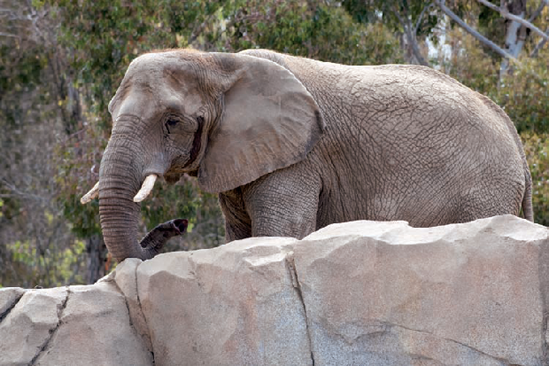Chapter 12. Wildlife and Animal Photography
Everybody loves animals, and photographing them can be a real pleasure. It also can be much more difficult than it looks, as animals tend to only come out in the morning and evening and will stay away from human contact. So learning to pick the right gear and use the best exposure modes and settings can help. I really enjoy photographing both domestic and wild animals and often head to the zoo for a morning of photography. You can find many opportunities to photograph animals, from the local zoo to a nearby park, or even a photographic safari in Africa. Your own backyard is also a great location. And if you have pets, they can be fantastic subjects. And although the animals and locations may change, the images, if done right, will capture the viewer's attention like very little else.

I arrived at the zoo early and photographed the elephants before the crowds arrived. I used Spot metering on the elephant, which is very close to 18-percent gray, giving me great exposure using Aperture priority. Taken at 1/500 second, f/4, ISO 200.
Exposure Consideration
Photographing wildlife and animals can really put your exposure skills to the test. Most of the action in wildlife photography takes place in low light due to the time of day or in deep shadows because that's the natural habitat of the animals you are trying to photograph. You'll have the same ...
Get Exposure Digital Field Guide now with the O’Reilly learning platform.
O’Reilly members experience books, live events, courses curated by job role, and more from O’Reilly and nearly 200 top publishers.

